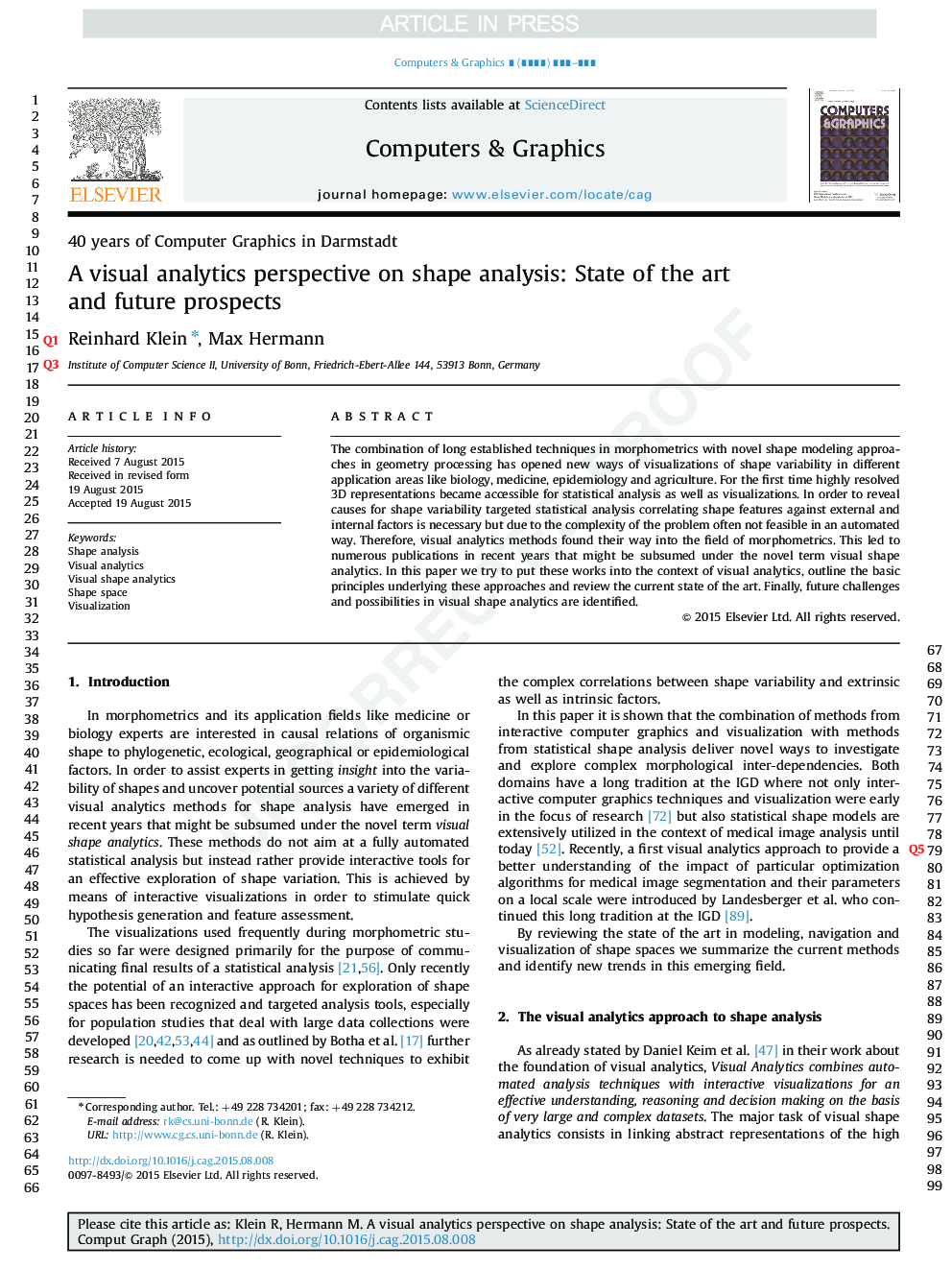| Article ID | Journal | Published Year | Pages | File Type |
|---|---|---|---|---|
| 10336903 | Computers & Graphics | 2015 | 9 Pages |
Abstract
The combination of long established techniques in morphometrics with novel shape modeling approaches in geometry processing has opened new ways of visualizations of shape variability in different application areas like biology, medicine, epidemiology and agriculture. For the first time highly resolved 3D representations became accessible for statistical analysis as well as visualizations. In order to reveal causes for shape variability targeted statistical analysis correlating shape features against external and internal factors is necessary but due to the complexity of the problem often not feasible in an automated way. Therefore, visual analytics methods found their way into the field of morphometrics. This led to numerous publications in recent years that might be subsumed under the novel term visual shape analytics. In this paper we try to put these works into the context of visual analytics, outline the basic principles underlying these approaches and review the current state of the art. Finally, future challenges and possibilities in visual shape analytics are identified.
Related Topics
Physical Sciences and Engineering
Computer Science
Computer Graphics and Computer-Aided Design
Authors
Max Hermann, Reinhard Klein,
